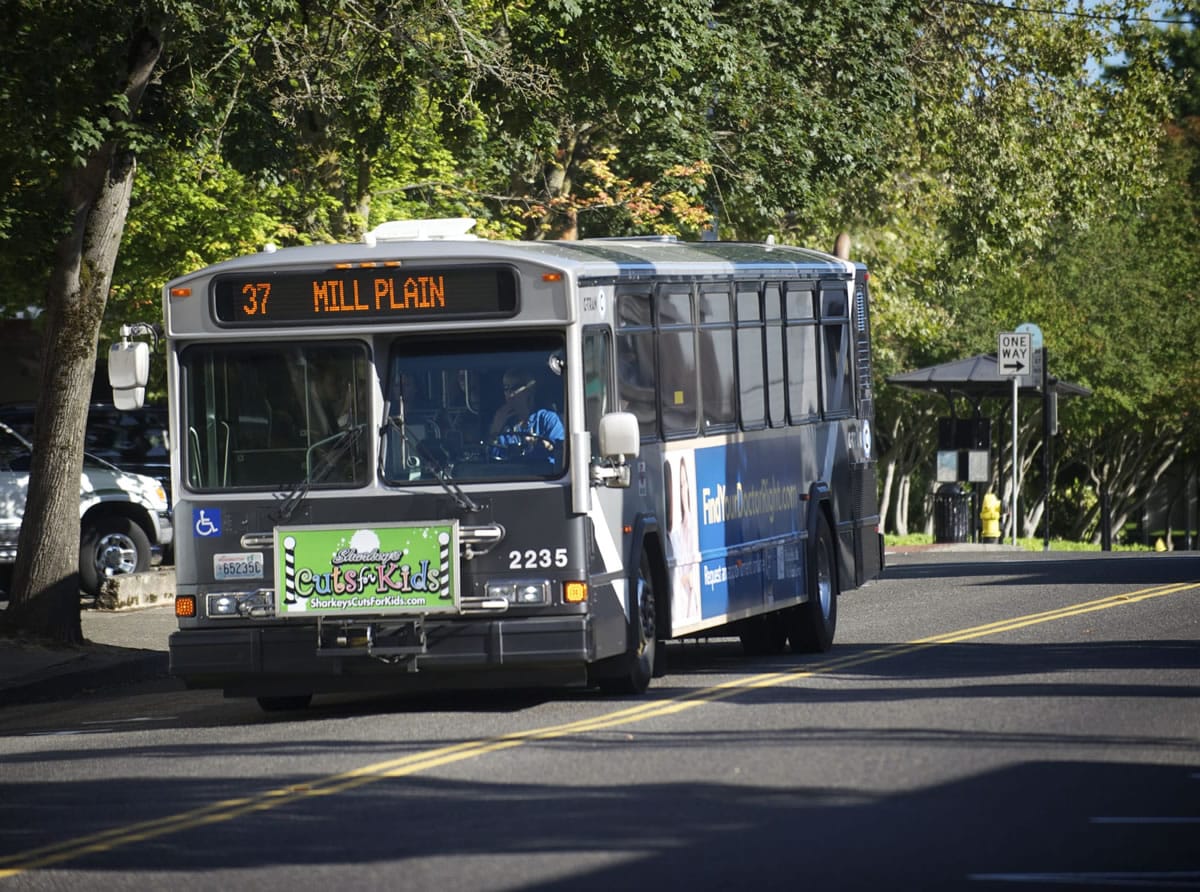Seattle sees big gains in public transit ridership
C-Tran ridership has fallen in recent years, but the trend may be at least partially attributable to a change in the way the agency counts passenger boardings.
Preliminary data show Clark County’s transit agency served nearly 6.4 million riders in 2013, down from almost 6.9 million in 2012. But 2013 was the first full year C-Tran used automated passenger counters, said public affairs manager Jim Quintana. The agency previously calculated ridership from survey data, he said.
The automated passenger counters, installed on every bus, are seen as a much more accurate way of measuring ridership. Though the shift created something of a discrepancy in ridership calculations, the 2013 number will establish a new baseline, Quintana said.
“From here on out, we’ll be able to really tell what’s going on in the system,” Quintana said.
Before the switch, C-Tran’s most recent high-water mark came in 2008, when ridership topped 7 million. Annual ridership also reached that number in the 1990s, before a major cut in state funding led to a reduction in service area and higher fares.
LOS ANGELES — With more trains and buses to take, and the appeal of using travel time for pursuits other than dodging traffic, Americans are taking greater advantage of a renaissance in public transit, according to a report released Monday.
The number of rides taken on public buses, trains and subways has fully recovered from a dip during the Great Recession. And with services restored following economy-driven cutbacks, ridership appears set to resume what had been a steady increase.
In 2013, the number of trips stood at nearly 10.7 billion nationally, the highest since 1956, according to data compiled by the American Public Transportation Association.
Of course, the nation’s population has been expanding, so there are more people to ride the rails and buses. The association’s numbers don’t mean that the average U.S. resident is taking public transit more often than in the 1950s, when investments in highways and a growth in car ownership began enticing Americans to move away from cities and heralded a decline in mass transit.
But even accounting for population growth, the transportation association argues, a wider segment of Americans are using mass transit, which now offers them more choices.
Since 1995, transit ridership is up 37 percent. During that time, the U.S. population has increased about 20 percent, and vehicle miles traveled are up about 23 percent.
“People are making a fundamental shift to having options” aside from a car in how they get around, said Michael Melaniphy, president and CEO of the public transportation association. “This is a long-term trend. This isn’t just a blip.”
Transit advocates argue that the public increasingly values the ability to get around without a car. As evidence, they cite a widespread return to urban centers and the movement to concentrate new development around transit hubs.
“People want to work and live along transit lines,” Melaniphy said. “Businesses, universities and housing are all moving along those corridors.”
The increased ridership is not universal. Transit agencies in Tennessee, Kentucky, Portland, Milwaukee and Boston, for example, reported falling ridership rates. And voters in cities such as Atlanta have rejected taxes for transit improvements.
Even with the ridership rebound, public transit accounts for a small fraction of all trips taken nationally — about 2 or 3 percent, according to Michael Manville, a professor of city and regional planning at Cornell University.
He questions whether the nation is ditching its cars in favor of public transit.
“For most public-policy purposes, our concern is not with more transit use but less driving,” Manville said. “If we are concerned about pollution and carbon emissions and traffic accidents and congestion, then transit is only beneficial to the extent people drive less because of it.”
Federal data suggest that Americans (and Europeans) are driving less. That doesn’t necessarily mean they are taking the bus or train more, said professor Marlon Boarnet of the University of Southern California.
“Is it a change in attitudes? Possibly so,” said Boarnet, who recently published a study suggesting that residents near one of the city’s new light rail lines drove less.
C-Tran ridership has fallen in recent years, but the trend may be at least partially attributable to a change in the way the agency counts passenger boardings.
Preliminary data show Clark County's transit agency served nearly 6.4 million riders in 2013, down from almost 6.9 million in 2012. But 2013 was the first full year C-Tran used automated passenger counters, said public affairs manager Jim Quintana. The agency previously calculated ridership from survey data, he said.
The automated passenger counters, installed on every bus, are seen as a much more accurate way of measuring ridership. Though the shift created something of a discrepancy in ridership calculations, the 2013 number will establish a new baseline, Quintana said.
"From here on out, we'll be able to really tell what's going on in the system," Quintana said.
Before the switch, C-Tran's most recent high-water mark came in 2008, when ridership topped 7 million. Annual ridership also reached that number in the 1990s, before a major cut in state funding led to a reduction in service area and higher fares.
“People may in fact be more open to taking other modes.”
Or they could be walking or biking — or deciding not to travel.
The transportation association partly credited an expansion of bus and train networks for the growth in ridership.
Ridership on Los Angeles County Metropolitan Transportation Authority light-rail trains increased 6 percent over 2012, as the public took advantage of an expanded network of lines. Overall, LA Metro gained 9 million trips to reach 478 million in 2013, the transportation association said.



